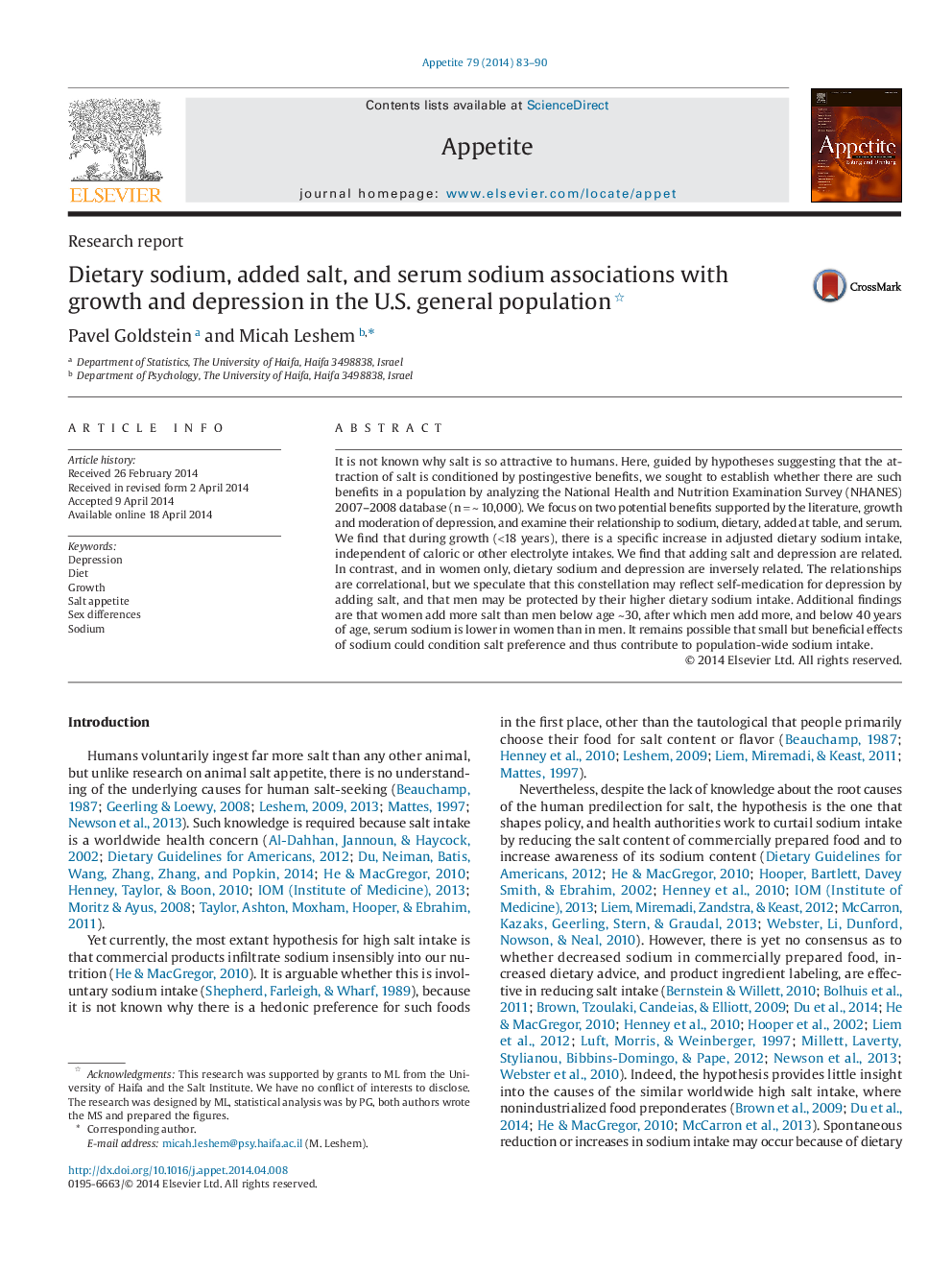| Article ID | Journal | Published Year | Pages | File Type |
|---|---|---|---|---|
| 7310001 | Appetite | 2014 | 8 Pages |
Abstract
It is not known why salt is so attractive to humans. Here, guided by hypotheses suggesting that the attraction of salt is conditioned by postingestive benefits, we sought to establish whether there are such benefits in a population by analyzing the National Health and Nutrition Examination Survey (NHANES) 2007-2008 database (nâ=â~â10,000). We focus on two potential benefits supported by the literature, growth and moderation of depression, and examine their relationship to sodium, dietary, added at table, and serum. We find that during growth (<18 years), there is a specific increase in adjusted dietary sodium intake, independent of caloric or other electrolyte intakes. We find that adding salt and depression are related. In contrast, and in women only, dietary sodium and depression are inversely related. The relationships are correlational, but we speculate that this constellation may reflect self-medication for depression by adding salt, and that men may be protected by their higher dietary sodium intake. Additional findings are that women add more salt than men below age ~30, after which men add more, and below 40âyears of age, serum sodium is lower in women than in men. It remains possible that small but beneficial effects of sodium could condition salt preference and thus contribute to population-wide sodium intake.
Related Topics
Life Sciences
Agricultural and Biological Sciences
Food Science
Authors
Pavel Goldstein, Micah Leshem,
